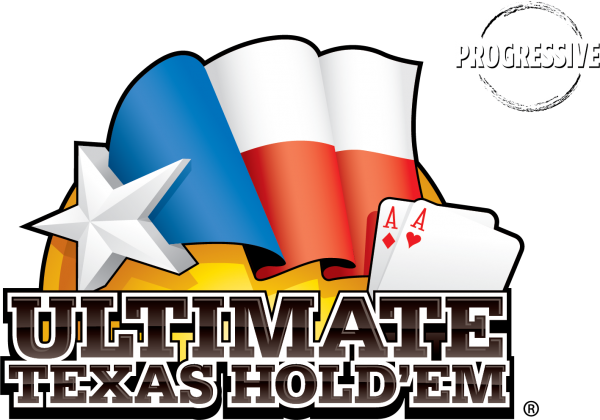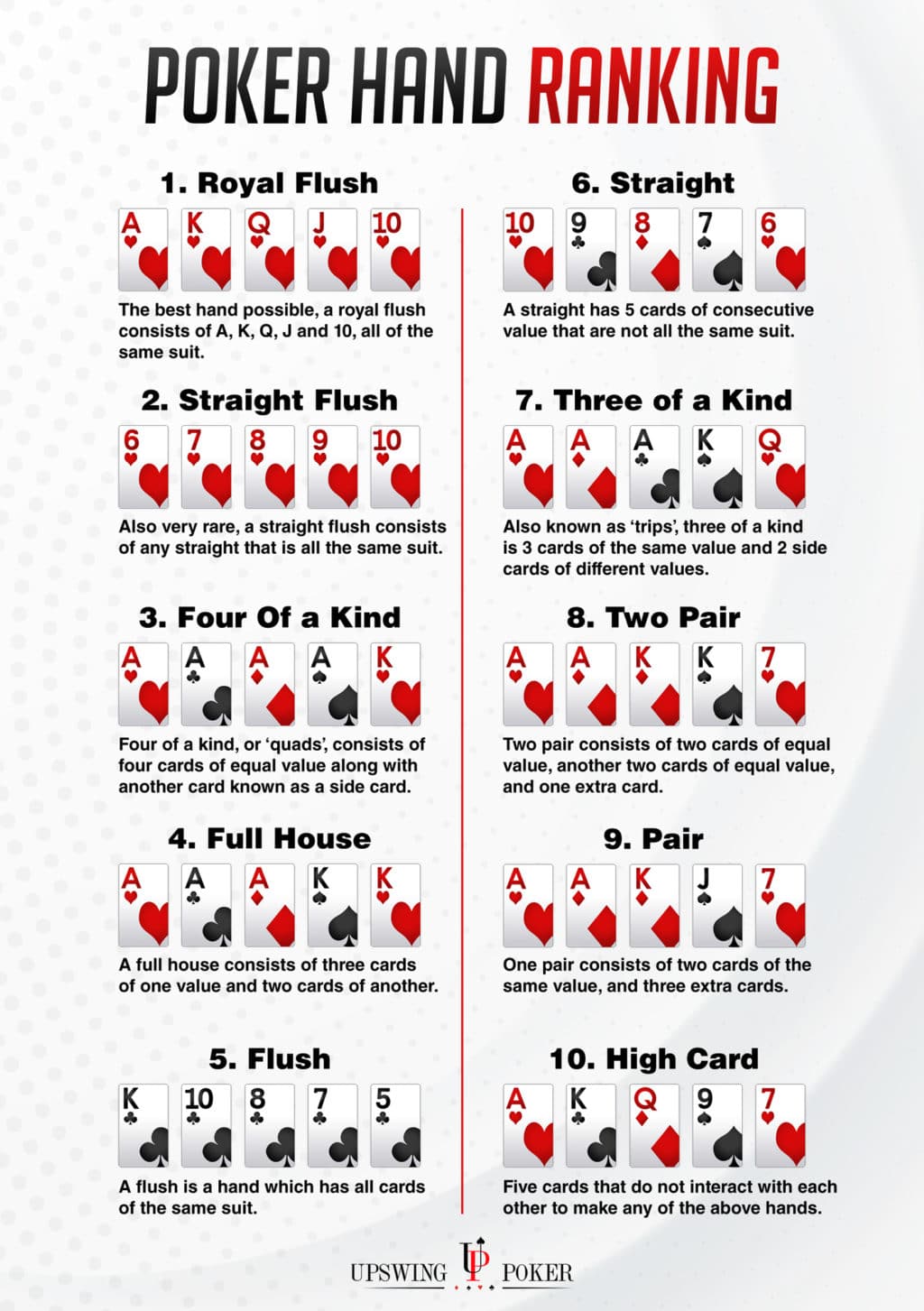Texas Holdem Rules Flush On Table

The flush that has the bigger highest card wins. If they are the same, compare the 2nd highest cards in each flush, and so on. In your case, player 2's J9862 beats player 1's J9532, because the 3rd highest card of player 2's flush is better. In casino poker, you play for table stakes. This means that you play with the chips that you have on the table. You’re not allowed to go into your pocket for more money in the middle of a hand. If you run out of chips you announce that you are “All IN” and you will only be eligible for the money in that pot up to that point. The basic rules of Texas Hold'em are quite simple. If you've played any poker at all, you're already familiar with hand ranks and standard betting options like bet, check, call, fold, and raise.
OBJECTIVE: To become a winner you should make up the highest possible poker hand of five cards, using the two initially dealt cards and the five community cards.
NUMBER OF PLAYERS: 2-10 players
NUMBER OF CARDS: 52- deck cards

Texas Holdem Rules Flush On Table Games
RANK OF CARDS: A-K-Q-J-10-9-8-7-6-5-4-3-2
THE DEAL: Every player is dealt two cards face down which is commonly called ‘hole cards’.
TYPE OF GAME: Casino
AUDIENCE: Adults
Introduction to Texas Hold ‘Em
How to Play
First Round Betting: The Pre-Flop
Second Round Betting: The Flop
Third & Fourth Round Betting: The Turn & The River
Ties
Pairs– if two players are tied for highest pairs a “kicker” or the next highest-ranking card is used to determine the winner. You continue until one player has a higher-ranking card or both are determined to have the same exact hand, in which case the pot is split.
Two pairs– in this tie, the higher ranked pair wins, if top pairs are equal in rank you move to the next pair, then move to kickers if necessary.
Texas Holdem Rules Flush On Tables
Three of a kind – higher ranking card takes the pot.
Straights – the straight with the highest-ranking card wins; if both straights are the same the pot is split.
Flush – The flush with the highest-ranking card wins, if the same you move to the next card till a winner is found or hands are the same. If hands are the same split the pot.
Full house – the hand with the higher ranking three cards wins.
Four of a kind – the higher ranking set of four wins.
Straight flush – ties are broken the same as a regular straight.
Royal Flush – split the pot.
Hand Ranking
Texas Holdem Rules Flush On Table Game


Ultimate Texas Hold ’Em is one of the newest variations of poker to be created and it has become widely available in most U.S. casinos over the last several years. Today it is one of the most popular niche table games in almost every casino that offers it.
When Ultimate Texas Hold ‘Em was first introduced, the game was only available on multiplayer electronic machines. Since that time, its popularity has exploded and it has been expanded into a live table game which is the most common variety played in casinos today. It is now a registered trademark of Bally Gaming.
Currently Ultimate Texas Hold ‘Em is available at most Las Vegas casinos and many others throughout the country. Like other forms of poker, Ultimate Texas Hold ’Em is played with a single 52-card standard deck of cards. Players start off by making a blind and ante bet. Unlike traditional Texas Hold ‘Em variations, however, these two wagers must be equal. There is also an optional Trips side bet which pays regardless of whether your hand wins or loses. Read on to learn more about Ultimate Texas Hold ‘Em payouts, rules and how to play.
Ultimate Texas Hold ‘Em Articles
– Read Our Guide to Playing Ultimate Texas Hold’em Online
Ultimate Texas Hold ‘Em Payouts & Winning Hands
The blind, ante and play bets are each scored slightly differently depending on the outcome of the hand. The blind bet has its own special pay table, according to the strength of the overall hand. For the blind, winning hands of a straight or better have special payouts. Winning ante and play bets are paid out at 1:1. Below we have put together a basic chart outlining each of these:
Overall Payouts Based on Winning Hand
| Winner | Dealer Qualifies | Blind Bet | Ante Bet | Play Bet |
|---|---|---|---|---|
Blind Bet Payout
– Royal Flush: 500-1
– Straight Flush: 50-1
– Four of a Kind: 10-1
– Full House: 3-1
– Flush: 3-2
– Straight: 1-1
Trips Bet Payouts
The Trips side bet is optional and pays regardless of whether the hand wins or not. It even wins if the board makes the hand, making it one of the most popular features of Ultimate Texas Hold ‘Em. It is also worth noting that players may fold and still win the Trips bet. Below we have outlined payouts based on the winning hand:
– Royal Flush: 50-1
– Straight Flush: 40-1
– Four of a Kind: 30-1
– Three of a Kind: 8-1
– Full House: 8-1
– Flush: 6-1
– Straight: 5-1
How to Play Ultimate Texas Hold ‘Em
The format used in Ultimate Texas Hold ‘Em is similar to other versions of Texas Hold ‘Em that are spread in poker rooms. The biggest draws are that unlike other poker varieties, Ultimate Hold ‘Em is played against the dealer and there is an optional trips bet (which we go over below). Another draw comes from the raise format, which offers the player an opportunity to raise as a multiple of of ante. These factors help add a higher level of excitement to the game. Below we’ll outline the rules and payouts associated with Ultimate Texas Hold ‘Em.
1. To start off, players receive two cards and so does the dealer. The players look at their cards and decide whether to check or to raise. If they opt to raise, it must amount to four times the ante. There is also an option to raise only three times – however, there is never a hand where basic strategy calls for this move. A raise at any point in the hand ends any player action.
2. After this decision, three cards (known as the flop) are shown. Players that did not raise before the flop now have the option of raising two times the ante. Checking is also an option here.
3. After the post-flop betting has been resolved, the last two cards are shown. At this point, players must either match their ante or fold.
4. The dealer then exposes his two cards and grades the hand. The dealer must have at least one pair to qualify. A paired board is considered a qualifier, even if the dealer did not match it.
5. If the dealer does not qualify, then the ante pushes; even if the player’s hand loses to the dealer. If the dealer’s hand qualifies, the best hand wins the ante bet. This is the same whether playing in a casino or online at top poker sites for real money.
Additional notes: Regardless of whether the dealer qualifies, the blind and raises are in play. If the dealer beats the player then the blind bet and raise lose. If the player beats the dealer, the raise is matched. Ties push the raise and blind bet.
Ultimate Texas Hold ‘Em Progressive
When it comes to the excitement level of Ultimate Texas Hold ‘Em, the possibility of hitting a progressive certainly adds to the game. There are generally two types of progressive available at a table. This includes a “small” and “big” progressive. Obviously, this will vary from casino to casino, and sometimes even state to state. Most commonly, to qualify for the progressive requires the player to place a $1 side bet.
Small Progressive
A “small progressive” refers to a player making certain hands by using at least 1 hole card. The highest payout comes from hitting a Royal Flush. Doing so will mean you get paid out the entire small progressive jackpot. Other hands qualifying for the progressive are community royals, straight flushes, four of a kinds and full houses.
Big Progressive
A “big progressive” refers to when a player makes the same hands listed above without using any hole cards. Instead, the player must flop a Royal Flush to win the jackpot. The jackpot for big progressives are generally much higher than the small progressive, since the odds are much lower on hitting one. You can still, however, win by using hole cards. For example, making a royal with a hole card still pays 5% of the jackpot, while a community royal will generally pay $3,000.